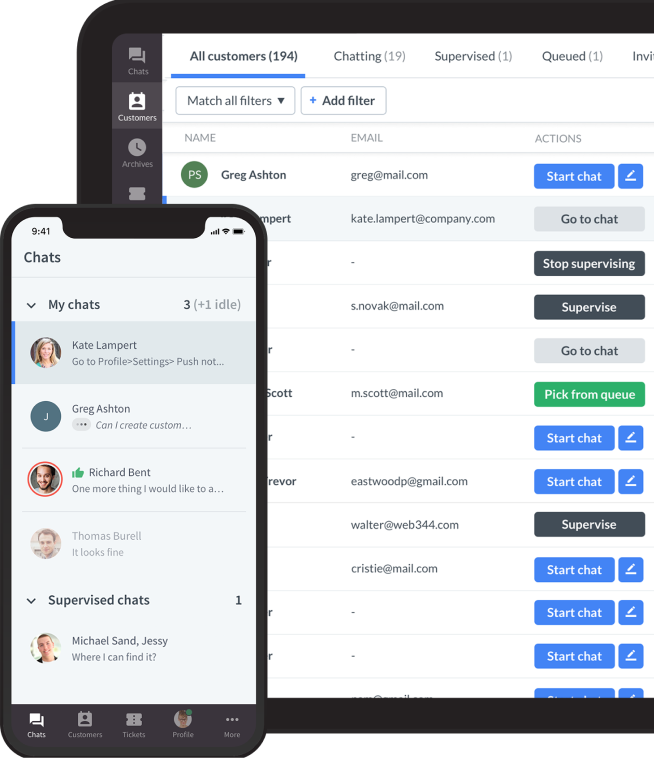
Customer service is often one of a business's most resource-intensive areas, requiring large teams, long hours, and constant training. For companies aiming to scale efficiently, email or voice channels can become costly bottlenecks. Live chat is not just a modern convenience but a powerful, cost-effective lever for efficient service across multiple channels.
It combines immediacy with efficiency, enabling teams to assist multiple customers simultaneously, automate repetitive tasks, and gather insights in real time without sacrificing quality. The result is a customer support operation that moves faster, costs less, and delivers more value to both the business and its customers.
This article explores the specific ways live chat helps reduce operating costs through smarter support staffing, automation, better data analytics, and more streamlined workflows, without sacrificing the service quality that customers expect.
What is live chat support
Check more insights about what live chat is and how it benefits your business!
Live chat is a real-time communication method that allows people to talk directly with a business through a chat window on a website or app. Instead of calling a support line or sending an email and waiting for a reply, customers can type their questions and get immediate responses from a human representative or an automated chatbot. This makes the experience faster and more interactive, especially when someone needs help while browsing a site, considering a product, or trying to complete a purchase.
For businesses, live chat is more than just a convenience — it’s a strategic tool. It allows customer service teams to assist multiple people at once, unlike phone support, which is one-to-one. It also lets businesses engage customers proactively, for example, by offering help if someone appears stuck on a checkout page.
Because it happens in real time and can be easily integrated with customer data systems, live chat offers both speed and personalization. It helps reduce friction, answer questions quickly, and build trust with users, all while enhancing efficiency and operational costs compared to traditional support methods.
Key features of a live chat support tool
Live chat software is a digital communication tool that enables real-time, text-based conversations between businesses and their customers through a website, mobile app, or other digital platforms.
It acts as a virtual help desk, allowing customers to get immediate assistance while browsing or interacting with a product or service online. It incorporates cost-saving strategies to improve customer experience, minimize the average response time, and build customer loyalty.
| Feature | Description |
|---|---|
| Chat widget | A small window embedded on web pages empowers customers to initiate a conversation. |
| Real-time messaging | Back-and-forth communication between the customer and the agent or bot provides instant responses to customer queries. |
| Automation and bots | AI or rule-based bots answer common questions, perform routine tasks, and can route inquiries without human intervention. |
| Multi-agent support | Allows several agents to handle support requests simultaneously for faster customer service, reducing support costs. |
| CRM and help desk integration | Pulls in customer data and conversation history for personalized customer service operations. |
| Canned responses | Prewritten replies to common customer service requests speed up response time. |
| Proactive messaging | Automatically triggers messages based on visitor behavior (for instance, lingering on a page). |
| Analytics and reporting | Tracks performance metrics such as response time, resolution rate, and customer satisfaction, all in one place, reducing costs for additional data analytics tools. |
See our tips on how to choose the right live chat software for your business.
How live chat software reduces customer support costs
Live chat can significantly reduce customer support costs for businesses by streamlining customer support operations and improving customer support agent efficiency. Here’s a detailed breakdown of how this works:
| Live chat benefits | How live chat software helps save money |
|---|---|
| Improved agent efficiency | Tabbed chat interfaces, canned responses, and multitasking features let agents handle multiple chats at once. |
| Lower cost per contact | Integrated CRM, smart routing, and queue management reduce interaction time and maximize cost savings. |
| Automation and chatbots | Bots handle routine inquiries, triage support, and operate 24/7 at minimal cost, resulting in higher customer satisfaction. |
| Higher first contact resolution | Unified dashboards, file sharing, and integrated knowledge bases help resolve issues quickly with self-service solutions for agents looking for answers. |
| Reduced email or voice channels | Chat widgets, smart triggers, and email deflection reduce maintenance costs on high-cost channels while still providing good customer service. |
| Smaller required customer service teams | AI support tools, load-balancing, and channel unification allow smaller customer service agent teams to stay efficient. |
| Proactive customer support | Behavior-based triggers and personalization offer help from human agents at critical touchpoints, preventing escalations. |
| Faster onboarding and training | Templates, internal notes, and AI recommendations shorten training time and ramp-up significant cost savings. |
| 24/7 support with lower overhead | Time-based routing and multilingual bots enable global support with fewer resources to provide accurate answers to any customer's problem. |
| Actionable insights for continuous improvement | Data analytics dashboards, sentiment analysis, and tagging reveal patterns and reduce customer service operations costs. |
Improved agent efficiency
Live chat allows customer service representatives to juggle multiple customer interactions at once, unlike phone calls, which demand full attention. This multitasking boosts productivity per customer support agent, reducing the number of staff needed to handle the same volume of inquiries.

What to look for:
✔️ Tabbed or split-screen chat interfaces allow agents to handle multiple chats simultaneously.
✔️ Typing indicators and pre-chat surveys help agents prepare responses while the customer is still typing.
✔️ Canned responses and keyboard shortcuts ensure rapid replies to common questions.
Lower cost per contact
Each live chat customer interaction is significantly cheaper than a phone call or customer service email. There are no telephony costs, hold times, or complex call routing systems. The reduced time spent per customer, thanks to instant replies and efficiency tools, means more customers served at a lower cost.
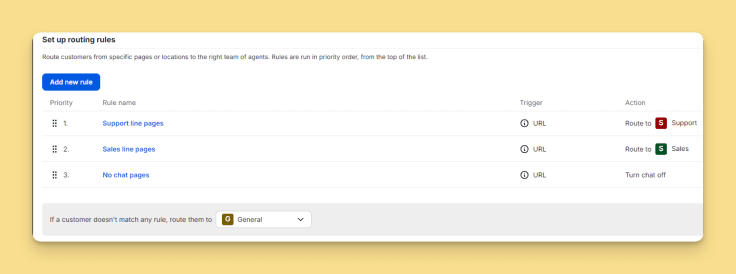
What to look for:
✔️ Integrated CRM tools allow chat agents to pull up customer history instantly, avoiding redundant questions.
✔️ Intelligent routing directs inquiries to the right agent, reducing transfer time and customer retention.
✔️ Queue management features prevent idle wait times, keeping support streamlined and customer satisfaction improved.
Automation and chatbots
Live chat platforms can integrate bots to handle repetitive questions like order tracking, business hours, or return policies. These bots can operate 24/7, minimizing customer support costs and performing routine tasks, freeing human agents to focus on complex or high-value interactions, and reducing overall support spend.
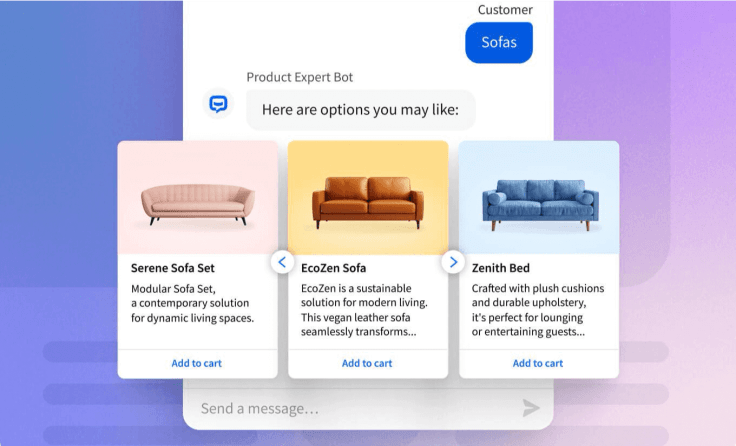
What to look for:
✔️ Rule-based chatbots handle FAQs and triage issues before routing to agents.
✔️ Conversational AI offers natural, context-aware interactions that reduce the need for escalation with natural language processing features.
✔️ Self-service widgets within the chat window can guide users to self-service options and how-tos.
Higher first contact resolution
Live chat tools often integrate with knowledge bases and customer data platforms, enabling chat agents to resolve issues faster and in a single interaction. This cost-effective approach reduces ticket reopen rates and the need for follow-ups, saving time and customer support operations resources.
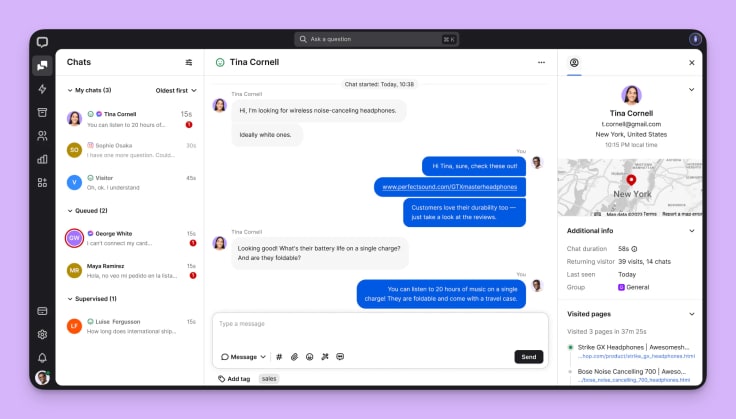
What to look for:
✔️ Unified dashboards display customer profiles, order history, and past interactions, ensuring fast and excellent customer service.
✔️ File sharing capabilities allow chat agents to send screenshots, guides, or forms in real time.
✔️ Integrated knowledge bases can be searched and shared directly within the chat window.
Reduced call and email volume
By giving customers an easy, immediate way to get help, live chat naturally diverts traffic from more resource-intensive channels like phone support and email. This helps companies consolidate their support operations and reallocate staff and support costs where needed.
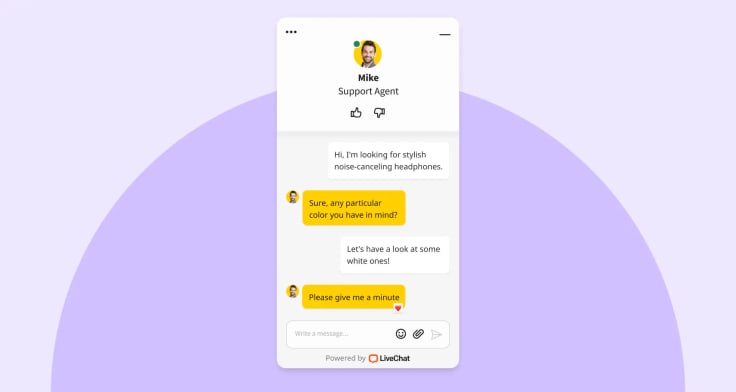
What to look for:
✔️ Embedded chat widgets on high-intent pages (like pricing, checkout) encourage use.
✔️ Smart popups can trigger chat invitations based on exit intent, time on page, or cart value.
✔️ Email deflection tools convert form-based queries into live chats when agents are available.
Smaller required support teams
Thanks to concurrent handling, automation, and self-service options, businesses can run support with leaner teams while maintaining high customer service operations standards. This directly saves money on salary, training, and equipment costs.
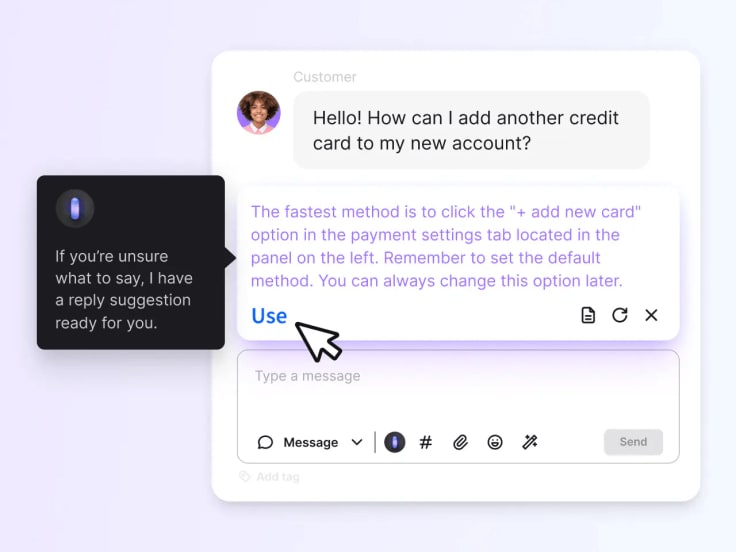
What to look for:
✔️ Workload balancing tools auto-assign chats to agents based on capacity and expertise.
✔️ AI suggestions help customer support agents respond faster and more accurately, shortening each interaction.
✔️ Multi-channel unification combines chats from web, mobile apps, and social media into one interface, simplifying team management no matter where the customer journey starts.
Proactive customer support
Live chat allows customer service agents to reach out during critical moments, offering real-time help and encouraging self-help materials to prevent cart abandonment or customer retention. Resolving these issues early reduces costs for recovery processes later.

What to look for:
✔️ Proactive triggers open chat windows based on behavior.
✔️ Personalized greetings driven by user behavior or account status encourage engagement.
✔️ A/B testing helps optimize trigger rules to maximize engagement without being intrusive.
Faster onboarding and training
Many chat systems come with pre-written templates, macros, and internal documentation that reduce the learning curve for new hires. Agents become effective faster, cutting down training time and associated expenses.
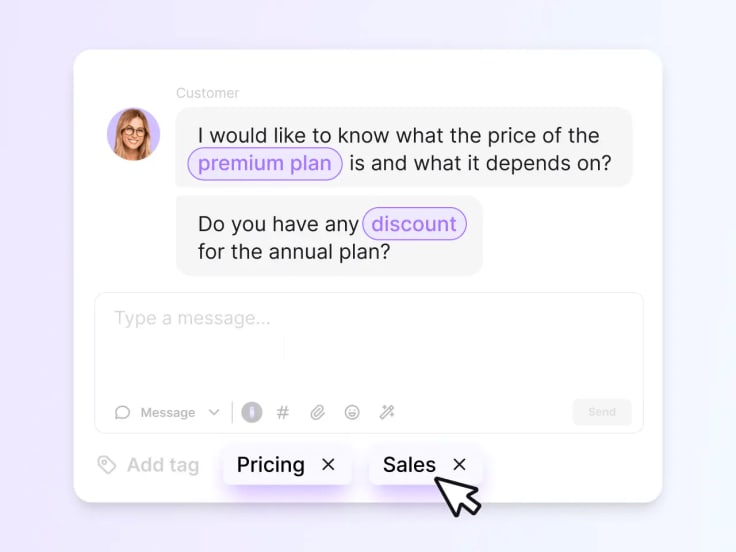
What to look for:
✔️ Internal notes and tagging systems help new agents learn from previous interactions.
✔️ AI copilot features recommend responses or knowledge base articles in real time.
✔️ Role-based access allows trainees to observe live chats before handling them independently.
24/7 support with lower overhead
Instead of hiring night shift agents or outsourcing, businesses can offer 24/7 support using a combination of bots and a smaller pool of human agents across time zones. This enables round-the-clock good customer service without overhead costs.

What to look for:
✔️ Time-based routing rules can direct after-hours chats to bots or offshore teams.
✔️ Escalation workflows allow bots to collect information for follow-up the next day.
✔️ Language translation tools support global teams by enabling service in multiple languages.
Actionable insights
Live chat platforms provide analytics on agent performance, customer satisfaction, peak traffic times, and common questions. These insights help streamline operations, reduce inefficiencies, and identify opportunities for automation or FAQ updates.

What to look for:
✔️ Detailed chat analytics dashboards track resolution times, satisfaction scores, and conversion rates.
✔️ Sentiment analysis highlights pain points and areas needing improvement.
✔️ Tagging and categorization allow pattern recognition in recurring customer issues.
Check how much a live chat software really costs in our comprehensive guide.
Conclusion
Live chat has evolved from a nice-to-have feature into a strategic tool for reducing operational costs. By enabling agents to handle multiple conversations at once, integrating automation for routine inquiries, and offering real-time customer context, live chat dramatically improves efficiency across the board. It reduces the need for large support teams, cuts down on call and email volume, and shortens resolution times, all while maintaining exceptional customer support.
When implemented thoughtfully, live chat lowers costs and enhances flexibility, scalability, and decision-making. For companies looking to do more with less, it's not just a support channel — it’s a competitive advantage.
